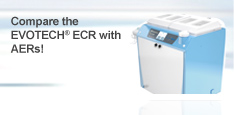Join ASP at the 59th AORN Congress in New Orleans!Learn More. Make an Impact.For the last 25 years, ASP has been providing the education and solutions you need to prevent healthcare-associated infections (HAIs) and create safe environments for your patients. Participate in our complimentary CE workshop sessions. You can also see the latest innovations from ASP! |
Clinical Education (CE) Workshop Topic:“Elevating the Standard of Care through Operational Excellence: Updates in Reprocessing |
OVERVIEW
One of the perioperative nurse’s greatest responsibilities is the prevention of infection for the patient undergoing surgery or other invasive procedures. A key component in infection prevention is the provision of semi-critical and critical devices that have been reprocessed properly to reduce the risk of pathogen transmission between patients. Therefore, as instrument reprocessing techniques continue to advance, it is imperative that the perioperative nurse remains aware of the current guidelines and best practices for reprocessing semi-critical and critical devices in order to elevate the standard of care through operational excellence, thereby promoting optimal outcomes in all perioperative practice settings. This continuing education activity will describe the differences in semi-critical and critical devices and their reprocessing requirements as outlined in the Spaulding classification system. The current standards of practice and professional guidelines for reprocessing semi-critical and critical devices will be discussed. Lastly, the key considerations and current guidelines related to reprocessing laryngoscope blades and handles will be described.
OBJECTIVES
After completing this continuing nursing education activity, the participant should be able to:
- Identify differences in semi-critical and critical devices.
- Discuss the standards of practice and guidelines for reprocessing semi-critical and critical devices.
- Describe how to implement best practices in reprocessing semi-critical and critical devices.
- Discuss current guidelines for reprocessing laryngoscope blades and handles.
FACULTY PRESENTERS
Janet Moran, RN, BSN, MBA
Sr. Clinical Education Consultant
ASP
Catherine Rocco, RN, BA, MSN, CNOR
Clinical Education Consultant
ASP
STATE BOARD APPROVAL
*Pfiedler Enterprises is a provider approved by the California Board of Registered Nursing, Provider Number CEP14944, for 2.0 contact hours.
Obtaining full credit for this offering depends upon attendance, regardless of circumstances, from beginning to end. Licensees must provide their license numbers for record keeping purposes.
The certificate of course completion issued at the conclusion of this course must be retained in the participant’s records for at least four (4) years as proof of attendance.
AD-120074-01-US_A


